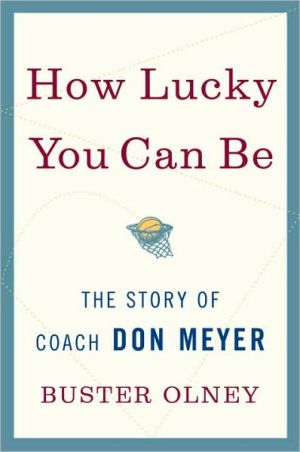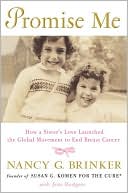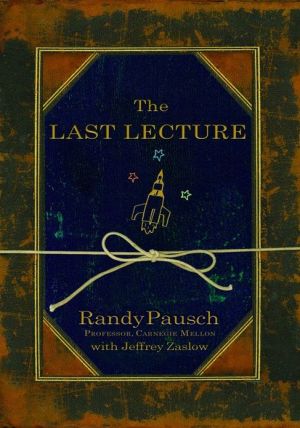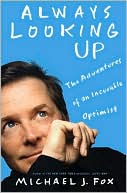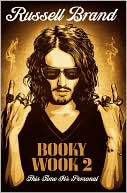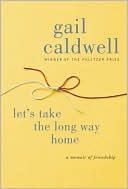How Lucky You Can Be: The Story of Coach Don Meyer
In September 2008, Northern State University men’s basketball coach Don Meyer stood on the brink of immortality. He was about to surpass the legendary Bobby Knight to become the all-time NCAA wins leader in men’s basketball. Then, on a two-lane road in South Dakota, everything changed in an instant.\ In How Lucky You Can Be, acclaimed sports journalist Buster Olney tells the remarkable story of the successive tragedies that befell Coach Meyer but could not defeat him. Laid low by a horrific...
Search in google:
In September 2008, Northern State University men’s basketball coach Don Meyer stood on the brink of immortality. He was about to surpass the legendary Bobby Knight to become the all-time NCAA wins leader in men’s basketball. Then, on a two-lane road in South Dakota, everything changed in an instant.In How Lucky You Can Be, acclaimed sports journalist Buster Olney tells the remarkable story of the successive tragedies that befell Coach Meyer but could not defeat him. Laid low by a horrific car accident that led to the amputation of his left leg below the knee, Coach Meyer had barely emerged from surgery when his doctors informed him that he also had terminal cancer. In the blink of an eye, this prototypical 24/7 workaholic coach—who arrived at the gym most mornings before 6 a.m.—found himself forced to reexamine his priorities at the age of sixty-three. A model of reserve, Coach Meyer had sacrificed much of his emotional life to his program. His wife, Carmen, felt disconnected because of his habitual reticence, while his three children—all now well into adulthood—had long had to compete with basketball for his attention.With sensitivity and skill, Olney shows how Coach Meyer mined his physical ordeal for the spiritual strength to transform his life. In the months that followed his accident and diagnosis, he reached out to family, friends, and former players in a way he had never been able to do before, making the most of this one last opportunity to tell those close to him how he felt about them—and in turn he received an outpouring of affirmation that confirmed how deeply he had affected others. Sustained throughout an often painful recovery by his love of basketball, he would return to the court once more—with a newfound appreciation for the game’s place in his life. The inspirational story of a life renewed by unimaginable hardship, How Lucky You Can Be proves that it’s never too late to start making changes—and reminds us that fortune can smile upon us even in our most trying hours.
Chapter 1\ The body was on the floor and except for the rise and fall of the chest, there was no movement. The legs were tilted upward onto the seat of a chair. This is what Brenda Dreyer saw in the middle of her office on the afternoon of September 5, 2008.\ She stepped from the room, pulled out her cell phone, and punched in numbers. It was three o'clock in Aberdeen, South Dakota.\ "Coach is here," she said into the phone in a low voice. "He's sleeping. Do you want me to wake him?"\ "No," said Randy Baruth, the assistant men's basketball coach at Northern State University. "Let him sleep. As long as he's ready to go by four, that's fine."\ Outside of Dreyer's office, the Northern State campus was bustling on this first Friday of the school year. A class of freshmen found their way around, asking the same questions that the older students had asked before them. Students registered for classes and flocked to the bookstore to buy texts. Old friendships were renewed.\ By tradition, on the first Friday of each school year, members of the men's basketball team would drive forty miles to a nearby hunting lodge off campus, a retreat designed to give the incoming freshmen a chance to assimilate. Through stories, a cookout, and games, the Wolves' players and coaches would learn more about one another, and about themselves. This was a day of rebirth.\ The caravan of coaches and players was scheduled to leave at four. But Don Meyer, the sixty-three-year-old head basketball coach at Northern State-a man eleven wins shy of Bob Knight's NCAA men's record for most wins in history-was dead asleep, in one of the handful of spots on campus where he took naps in the middle of the day, lying on his back, baseball cap tilted over his eyes, feet propped on a chair.\ He had been an early riser his entire life. Having grown up on a Nebraska farm with a taskmaster father, Meyer tended to wake at four or five a.m., work through the morning, and then tire easily in the middle of the afternoon.\ Coaching made his schedule that much more exhausting. Recruiting in the Dakotas and other western states was done by car, in drives measured in hours rather than miles. And because Northern State's athletic programs shared one gymnasium in the middle of the South Dakota winter, the practices for the men's basketball team were often held at six a.m. Some days Meyer and an assistant would drive most of the night and then go straight to practice. Sleeping in until seven a.m. or later was not an option, and Meyer didn't drink coffee or caffeinated soda. The weariness was so constant that he often slipped catnaps into his schedule.\ But he couldn't do that in his office, because even in September, before the team was practicing every morning, his day could be overrun by phone calls and emails and videotapes. The door to Meyer's office was kept open all day. A windowless square ten\ feet by ten feet, built with facing cement blocks and drywall, Meyer's office could've been confused for a place of solitary confinement-save for the way the place was decorated and the nonstop human traffic. Other coaches walked through Meyer's office to get from the main lobby to their offices. Basketball players came to check in by signing the blue notebook that rested on a bookshelf opposite his desk. Friends stopped by just to chat. Meyer liked having his office in the middle of everything.\ His walls were covered with pictures and posters and placards containing mantras or memories. Coaching legend John Wooden, a longtime friend of Meyer's, commanded the most space, with his gold pyramid of success and framed pictures of Wooden from the day he flew into Aberdeen to work Meyer's annual coaching clinic. Meyer had a sign, colored in UCLA gold, that was filled with words that had been given to Wooden by his father:\ Don't Whine. Don't Complain. Don't Make Excuses.\ A plaque for the national championship team that Meyer coached in 1986 at David Lipscomb College hung on one wall. File cabinets and boxes were stacked in a corner, leaving just enough room for Meyer to turn one hundred and eighty degrees in his black swivel chair and type into his computer.\ But because his office was the superhighway of the Northern State gym, he couldn't nap there without being interrupted. So Meyer would escape to three or four different spots on campus where he could sit, lower the bill of his cap, and doze. The Hall of Fame room at the Barnett Center. The office of Harry Jasinski, the jocular eighty-one-year-old professor emeritus. The office of Brenda Dreyer, Northern State's director of university relations, where she found him on this day with his feet propped up.\ Eventually, Meyer stirred and, seeing Dreyer, tried to get up. But his feet got tangled with the chair and he grasped at Dreyer's extended hand, both of them laughing at his awkwardness. "You dope," Dreyer said. Finally, he rose.\ Meyer was six foot two, a former college pitcher and basketball player. He had lost most of his hair in early adulthood, and because his default expression was a concentrated frown, with his right eyebrow arched, those who met Meyer initially thought he was humorless, a notion shattered as soon as they came to recognize his droll sarcasm and love of jokes. Like this one, which he heard from Wooden and repeated often:\ A cowboy comes in off the hot trail, hot and dusty from the cattle drive, and struts into a bar. He is all business, John Wayne-tough, and he announces to everyone in the bar, "My horse is outside, and nobody better take it, or else I'll have to do what I done did down in Texas."\ He orders a sarsaparilla, the place is dead quiet, and the bartender leans forward and quietly asks, "What was it that you done did down in Texas?"\ "Walk," the cowboy says.\ Meyer left the administration building and returned to his office, and in the last minutes before the drive to the hunting lodge, he filled in the day planner that ranked, in its importance to him, somewhere among air and water.\ The plan was for Randy Baruth, the assistant coach, to drive at the head of the caravan. When Baruth had begun as Meyer's assistant coach at Northern State, Meyer usually started at the wheel when they took their hours-long recruiting trips together. But Baruth could see that Meyer sometimes struggled to stay awake on long drives, especially later in the day, and Meyer told Baruth stories about waking up on the road and not remembering how he got to where he was; so, in time, Baruth did almost all of the driving whenever they traveled together.\ Once, in Baruth's second year working for Meyer, the Wolves recruited a kid who lived in Crosby, North Dakota-about sixteen miles from the U.S.-Canada border, and some four hundred miles from Northern State University. Meyer and Baruth were scheduled to visit with the player at about ten a.m., and Baruth figured that they would drive much of the route the night before the meeting, check in to a hotel, and then finish the drive the next morning. But Meyer insisted on leaving at two a.m. and driving straight through the night. Baruth was furious at Meyer's stubbornness over not spending money to get a hotel room, but this was Meyer's way. His players had always joked about how cheap he was. If the choice came down to paying twenty-nine dollars for a hotel room and getting a decent night's sleep or pushing through, Meyer would keep driving. "That's the stupidest thing I ever heard of," Baruth said. "You're driving." An hour into the trip, Baruth looked over and could see that Meyer was having difficulty staying awake; fuming, Baruth drove the rest of the way to Crosby, and all the way back.\ Baruth figured he would be at the wheel, even on the short trip to the retreat. The players were ready to leave at four p.m., as scheduled. But Baruth was behind in his work; he needed to copy some materials to send to a recruit. Finally, Baruth told Meyer, "Hey, Coach, I'll just meet you out there."\ The drive wasn't long, just forty minutes. The team's caravan of six cars left the parking lot of the Barnett Center a little after four o'clock, the cars packed with sleeping bags and food to grill. Alone in the lead, in a four-door Toyota Prius bought for its efficient gas mileage, was Don Meyer. Husband to Carmen Meyer for forty-one years. Father of three. Grandfather of eight.\ The lodge was easy enough to get to, a left turn and then some rights. After a mile on Melgaard Road, a left turn onto South Dakota Road 281- and then straight into the horizon. Through a windshield, the prairie sky looked like a blue semicircle set upon the land. Harvest was just weeks away, and rows and rows of corn filled the fields on both sides of the road. Old-fashioned telephone poles ran parallel to State Road 281, wooden crosses holding up double strands of wires.\ They passed the Brown County Rifle Range on their right, and Kamen Equipment on their left, two of the few real landmarks in Brown County. Round bales were scattered across fields, rising like dunes in a desert. In some fields, the round bales were stacked three high-the farmer's pyramid of success-to keep them out of the pools of water that often collected on South Dakota's flat fields. In another couple of months, these plains would be filled so thick with snow geese and Canada geese that it would look as if you could walk across entire fields while only stepping on the backs of the birds.\ The caravan, with the cars close together, crossed into Spink County, but the only way they would know the difference was by the sign. The only thing modern out there was the glimmering harvesting equipment, parked in front of farmhouses with peeling paint.\ Twenty-one miles down the road there was a sign that pointed in three directions. Meyer turned west onto County Road 20, toward Northville, the other cars following.\ Kyle Schwan, one of the team's seniors, was driving the fifth car in line, chatting with a carful of teammates. Bojan Todorovic, sitting directly behind Schwan, started to fall asleep, lulled by the landscape. They passed Northville's cemetery.\ There were no tall trees cutting into the landscape, because of centuries of wind; there were just rows of cottonwood, mostly no more than twenty-five feet high and mostly in seeded lines to mark property boundaries or to just provide a little cover from the relentless prairie gusts. Herds of Black Angus cattle were sprinkled on the landscape; the cattle tilted their heads down, pulling at the grass with their mouths, flicking at flies with their tails. The wind blew, as it almost always does here-an easy ten mph on this day, just enough to make the fields of wheat and the corn stalks ripple.\ County Road 20 rose and fell gently between more cornfields, and every quarter mile, there were small inlets into the fields, used by the harvesters. The caravan drove into the afternoon sun. It was sixty- three degrees. Meyer looked for the turnoff.\ Brett Newton, a sophomore guard on the Northern State team, was seated in the car second in line in the caravan, directly behind Meyer. He saw the coach's car begin to drift across County Road 20, over both yellow lines. And he saw a semi, hauling a trailer, barreling in the other direction, eastbound. Meyer's car and the semi were both moving about fifty-five mph, right at each other.\ In an instant, the thought passed through Newton's mind that Meyer would surely turn his wheel and pull his car back on track. "Coach!" Newton shouted. "Coach!"\ Meyer's car continued to drift into the eastbound lane. Now the driver's side wheels were well across the yellow lines, taking up almost half of the lane just fifteen feet wide.\ The left front side of Meyer's car smashed into the left front of the semi, disappearing briefly into a cloud of metal, rubber, plastic, and glass. One player would later say it looked like something out of a Hollywood action movie. Except this was real life. This was Coach Meyer.\ The impact of the collision drove the front of Meyer's car an inch into the asphalt. The tires exploded, and two doors from Meyer's car were launched straight into the air; one of them flew over the second car in the Northern State caravan. Meyer's tire was thrown to the rear by the collision, into the path of the oncoming cars. The body of Meyer's car spun counterclockwise, bouncing off the body of the truck.\ Meyer's car twisted across the highway, probably twice, and came to rest on the side of the road, on a twelve-foot embankment, facing east, rather than west. The second and third cars in the caravan rolled to a stop near Meyer's car, off the side of the road.\ Tramel Barnes, a freshman, drove the fourth car in the caravan; he saw the debris from the collision shoot into the air. Suddenly, the front corner of the semi rumbled directly at him. He felt the back end of his car get lifted up and knocked to the side; the glancing blow from the truck ripped his car off its back axle and nudged the back end to the shoulder.\ Bojan Todorovic, riding behind Kyle Schwan in the backseat of the fifth car, was still asleep when Meyer hit the semi, but was jarred awake when Schwan instinctively tapped his brake at the sight of the collision. Bojan was among the five players stuffed into Schwan's four- door Honda; Bojan was six foot nine and there were three players in the car taller than him.\ Bojan looked up and saw the grille of the semi barreling directly at him, and he screamed out. Schwan saw the front of the truck too, and slammed his right foot onto the gas pedal and turned the wheel hard to his right, trying to get out of the path of the truck. He braced for impact, and heard a distinct sound directly behind him: Vwoomp! Bojan heard it too.\ It was the sound of the front corner of a semi clipping off the casing of the back light of a Honda.\ Schwan's car was otherwise intact and rocketed over the shoulder and down a short embankment before rolling to a stop. The semi rolled across the westbound lane of County Road 20, barreling over the shoulder and then sinking into the grassy apron alongside the highway, facing north.\ Everything stopped. A moment of silence. And then car doors started opening, with the players jumping out and running toward Meyer's car.\ Matt Hammer, the driver in the last car in the caravan, had played for Meyer for four years before returning to Northern State University to serve as a graduate assistant coach. Now, as Hammer burst out of his car and started running down County Road 20 toward the remains of Meyer's car, he fought the fear that the man who had influenced his life more than anyone other than his own father was already dead.
